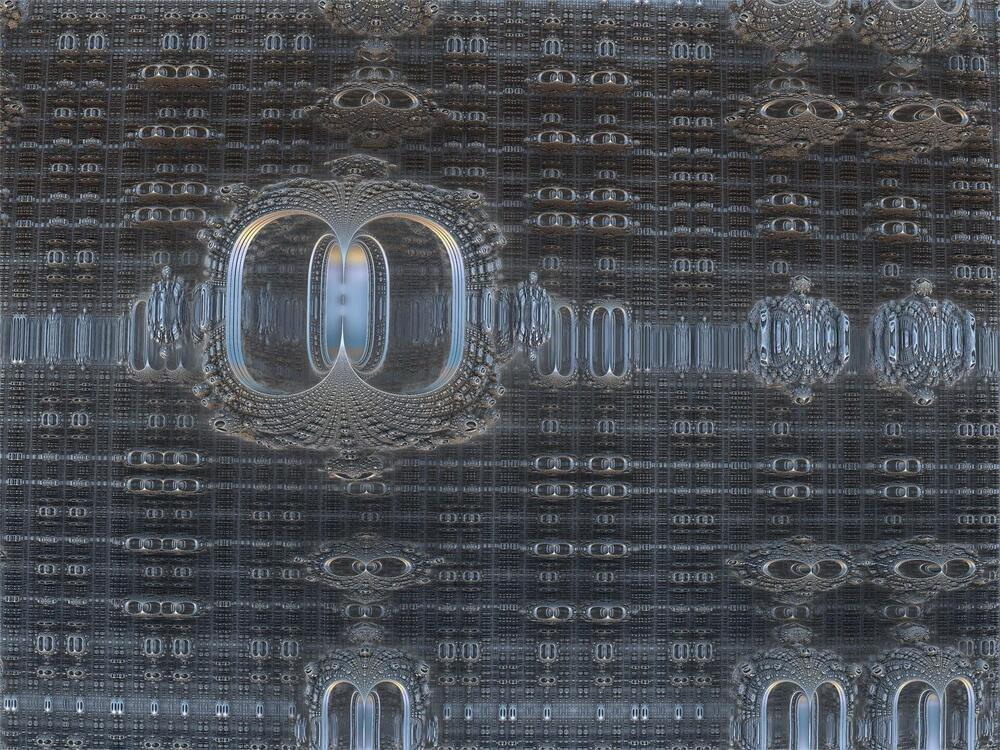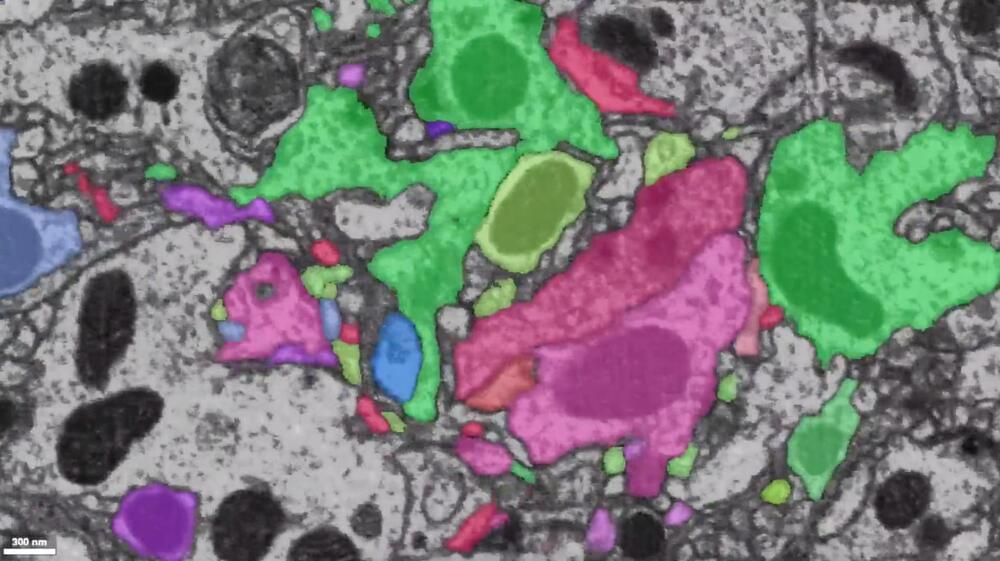The Cybernetic Theory of Mind, or the CTM model, is an integral multidisciplinary ontological model that allows to draw a wide variety of predictions and deductions from the intersections of two or more foundational axioms. The CTM model also allows integration of further epistemic elements under its broad ontological umbrella as they come to be known. The CTM model can be visualized as a 3D pyramid with 4 foundational axioms at the base and the OS axiom, related to the Omega Singularity (as well as “Operating System”), at the apex of the pyramid (See The CTM Pyramid of Foundational Axioms below).
Category: computing – Page 559

Astronomy tests the QHY 410C, a color camera without the noise
Move aside CCDs. Consumer CMOS cameras are here to stay.
For 20 years, I have been using charge-coupled device (CCD) cameras, and I currently own the top-of-the-line SBIG STX-16803. But while studying two images I recently made using the latest QHY 410C CMOS camera, I had to wonder: Is CCD dead?
For years, I lectured about the asymptotic boundary of noise in CCD images. In a basic sense, this means that no matter how many frames you take to increase your signal-to-noise ratio for a cleaner image, you will always run into a wall of noise when you stretch your image to bring out deep shadows. But with QHY’s new CMOS camera, this troublesome wall of noise is nonexistent.
The QHY 410C is a one-shot color camera that utilizes the back-illuminated Sony IMX410 CMOS chip found in high-end cameras like the Nikon Z6 and the Sony A7 III. But the 410C has taken the full-frame (35 millimeter) 24-megapixel chip and mounted it in a camera with regulated cooling and zero amplifier glow, helping drive the noise to such a low level.
Mark Zuckerberg — Founder and CEO of Meta | The Tim Ferriss Show
It’s a reference to the evil form in the ‘Lord of the Rings’ books. For those unfamiliar with the ‘Lord of the Rings” books and movies, the Eye of Sauron is the chief antagonist in the series, exemplified as a flaming eye and that is a metaphor for pure evil. It’s not something anyone would want to be compared to unless, of course, you are Meta founder and CEO Mark Zuckerberg.
Mark Zuckerberg on Long-Term Strategy, Business and Parenting Principles, Personal Energy Management, Building the Metaverse, Seeking Awe, the Role of Religion, Solving Deep Technical Challenges (e.g., AR), and More | Brought to you by Eight Sleep’s Pod Pro Cover sleeping solution for dynamic cooling and heating (http://eightsleep.com/Tim), Magic Spoon delicious low-carb cereal (http://magicspoon.com/tim), and Helium 10 all-in-one software suite to sell on Amazon (https://helium10.com/tim).
Mark Zuckerberg (FB/IG) is the founder, chairman, and CEO of Meta, which he originally founded as Facebook in 2004. Mark is responsible for setting the overall direction and product strategy for the company. In October 2021, Facebook rebranded to Meta to reflect all of its products and services across its family of apps and a focus on developing social experiences for the metaverse—moving beyond 2D screens toward immersive experiences like augmented and virtual reality to help build the next evolution in social technology.
He is also the co-founder and co-CEO of the Chan Zuckerberg Initiative with his wife Priscilla, which is leveraging technology to help solve some of the world’s toughest challenges—including supporting the science and technology that will make it possible to cure, prevent, or manage all diseases by the end of the twenty-first century.
Mark studied computer science at Harvard University before moving to Palo Alto, California, in 2004.

The Biggest Revolution Since the Computer Is Here — Synthetic Biology 🧫
Innovations in computing tech have improved the accuracy of DNA synthesis and enabled synthetic biology to work in the real world.
I don’t know about you, but I’m constantly looking for the “next big thing” in the stock market. And I think synthetic biology might just be it.
Why? If you invested just $10,000 into any of those world-changing stocks back in their early days, you’d have MILLIONS today. Forget the Iraq War, the housing crash, the European debt crisis. Forget the pandemic and the Russia-Ukraine war. Through it all, you’d have millions today.

Briefcase Computer Is A Glorious Cyberpunk Build
There are plenty of gaming laptops on the market these days, but none quite fit the requirements of one [ParticularlyPippin]. Thus, they set out on building their own portable computer, ending up with a rig in a briefcase with a decidedly cyberpunk feel.
The design relies on desktop components, with the idea being to make a machine with better upgradability than a typical laptop. The briefcase itself is a nice deep-shell unit, and was given a wooden baseboard to hold all the components. It was then provided with standoffs and mountings for a Mini-ITX motherboard, as well as all the necessary add-ons like fans and storage. As in many odd-form-factor builds, a PCI-E riser cable comes in handy to hook up the GPU.
As for the user interface, a USB portable monitor is paired with a mechanical keyboard for the appropriate amount of clackity-clack when hacking out in the field. The icing on the cake, however, are the RGB strip backlights controlled via MSI’s software that really make the final result pop.

New algorithm could be quantum leap in search for gravitational waves
A new method of identifying gravitational wave signals using quantum computing could provide a valuable new tool for future astrophysicists.
A team from the University of Glasgow’s School of Physics & Astronomy have developed a quantum algorithm to drastically cut down the time it takes to match gravitational wave signals against a vast databank of templates.
This process, known as matched filtering, is part of the methodology that underpins some of the gravitational wave signal discoveries from detectors like the Laser Interferometer Gravitational Observatory (LIGO) in America and Virgo in Italy.


Facebook: From MRI machines to computer hard disk storage, magnetism has played a role in pivotal discoveries that reshape our society
In the new field of quantum computing, magnetic interactions could play a role in relaying quantum information.
In new research, Argonne scientists achieved efficient quantum coupling between two distant magnetic devices, which which may be useful for creating new quantum information technology devices — https://bit.ly/3uk88Q3

Using steampunk to explain quantum physics
What do quantum computers have to do with smog-filled London streets, flying submarines, waistcoats, petticoats, Sherlock Holmesian mysteries, and brass goggles?
A whole lot, according to Nicole Yunger Halpern. Last week, the theoretical physicist joined Jacob Barandes, co-director of graduate studies for physics, to discuss her new book, “Quantum Steampunk: The Physics of Yesterday’s Tomorrow.” In it, Yunger Halpern dissects a new branch of science—quantum thermodynamics, or quantum steampunk as she calls it—by fusing steampunk fiction with nonfiction and Victorian-era thermodynamics (the heat and energy that gets steam engines pumping) with quantum physics. Yunger Halpern presents a whimsical lens through which readers can watch a “scientific revolution that’s happening in real time,” Barandes said, exploring mysteries even Holmes couldn’t hope to solve, such as why time flows in only one direction.
“This fusion of old and new creates a wonderful sense of nostalgia and adventure, romance and exploration,” Yunger Halpern said during a virtual Harvard Science Book Talk presented by the University’s Division of Science, Cabot Science Library, and Harvard Book Store. In steampunk, she continued, “fans dress up in costumes full of top hats and goggles and gears and gather at conventions. What they dream, I have the immense privilege of having the opportunity to live.”

Mojo Vision unveils latest augmented reality contact lens prototype
Mojo Vision said it has created a new prototype of its Mojo Lens augmented reality contact lenses. This smart contact lens will bring “invisible computing” to life, the company believes.
The Mojo Lens prototype is a critical milestone for the company in its development, testing, and validation process, and is an innovation positioned at the intersection of smartphones, augmented reality/virtual reality, smart wearables, and health tech.
The prototype includes numerous new hardware features and technologies embedded directly into the lens — advancing its display, communications, eye tracking, and power system.